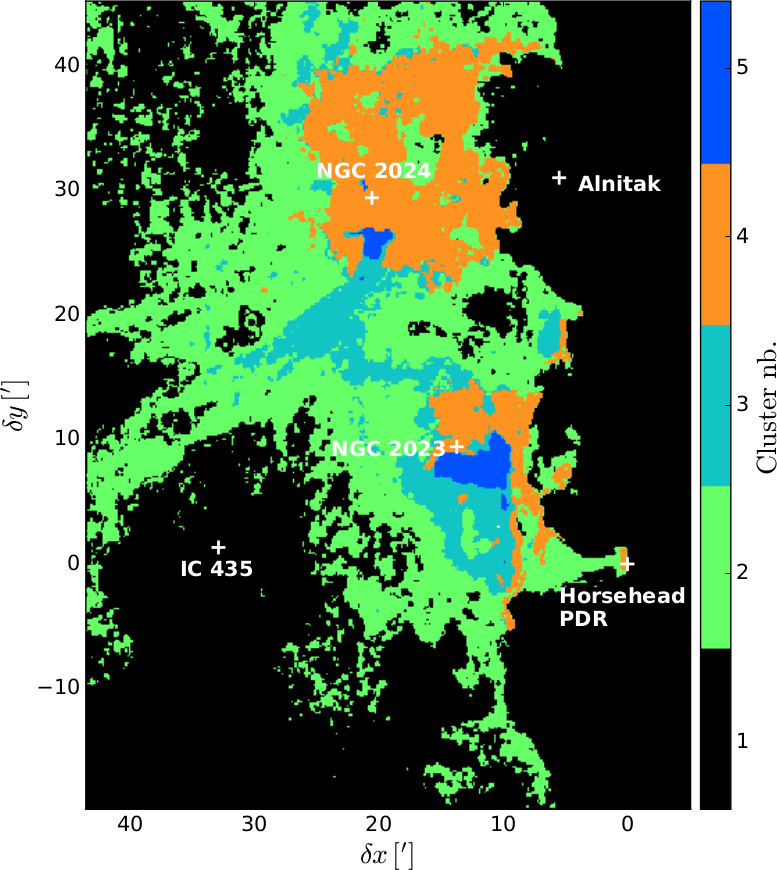| EPoS Contribution |
|
Unsupervised Characterization of the Physical/Chemical Phases in a GMC
Emeric Bron ICMM-CSIC, Madrid, ES | |
|
The recent advances of the spectro-imaging capacities in the millimeter
domain allow to easily map large areas of molecular clouds in tens of
molecular lines simultaneously. This raises new challenges in handling
and analyzing the massive datasets produced, but also new opportunities
to harness the recent developments of machine learning techniques to
tackle the current questions of star formation in statistical terms. The
ORION-B Large Program has mapped a wide area
(5 square degrees) of the Orion B molecular cloud with the IRAM 30m/EMIR
3mm receiver in a wide spectral range (72-116 GHz), at a typical spatial
resolution of 27" (50 mpc) and a typical sensitivity of 0.1 K, yielding
images in more than ten molecular lines. This nearby (400 pc) giant
molecular cloud, which includes star forming regions and is is exposed
to the intense UV radiation from nearby massive stars, is an ideal case
study of the interplay between chemistry, turbulence and stellar
feedbacks.
We used unsupervised machine learning techniques to characterize the variations of the molecular emission lines across the cloud and their relations to the underlying physical variations (in density, UV illumination,...). First, a principal component analysis allowed us to identify the main independent features explaining the observed variations of the molecular lines; we could relate the most important features to variations in the column density, volume density and UV illumination. Second, we performed a clustering analysis using the Meanshift algorithm to segment the Orion B cloud into types of regions based on the similitude of their molecular emission, which we can then be studied in detail separately. We showed that the categories so defined correspond either to distinct density regimes (diffuse, translucent and denser gas regimes), or to distinct chemical regimes (UV-induced photochemistry vs. UV-shielded dense gas chemistry). | |
 | |
| Caption: Segmented map of Orion B distinguishing photochemistry dominated regions (orange) from UV-shielded dense gas chemistry (light and dark blue). From Bron et al. 2017 | |
| Collaborators: P. Gratier, LAB, FR M. Gerin, LERMA Paris Obs., FR J. Pety, IRAM, FR C. Daudon, LERMA Paris Obs., FR F. Levrier, LERMA ENS, FR J.H. Orkisz, LERMA/IRAM, FR V. Guzman, JAO, CL S. Bardeau, IRAM, FR J.R. Goicoechea, ICMM-CSIC, ES H. Liszt, NRAO, US K. Oeberg, CfA, US N. Peretto, Cardif U, UK A. Sievers, IRAM, FR P. Tremblin, CEA, FR |
Key publication
Suggested Session: Molecular clouds |

